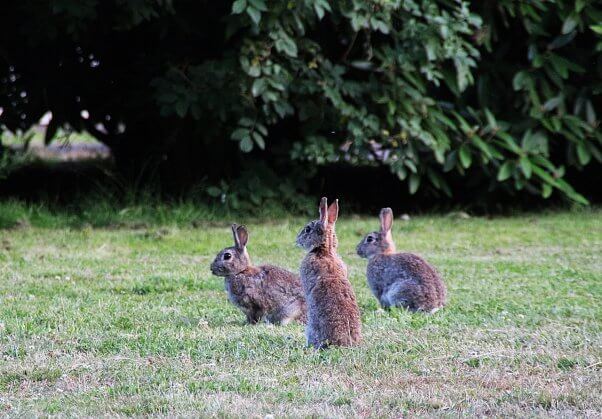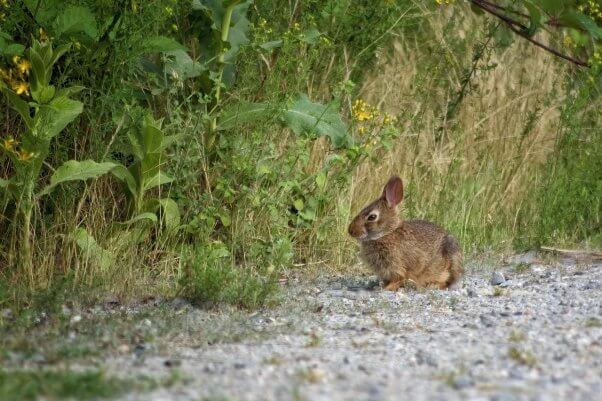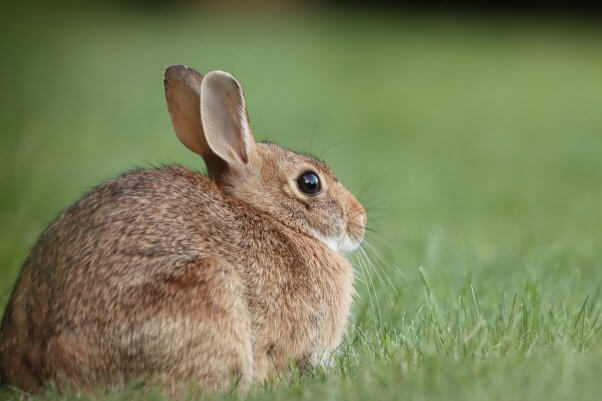If You Find a Baby Bunny Outside, Here’s What to Do
Wondering what to do if you find baby bunnies in your yard? Most of the time, young rabbits don’t need any help from you. PETA answers the FAQs about helping baby wild rabbits.
What Happens If You Find Baby Bunnies In Your Yard?
It’s normal to see young wild rabbits in the springtime, and the vast majority of them don’t need any help from humans, even if they’re alone, unless they’re injured. So, how can you tell if a baby bunny needs help? As a general rule, If you can’t catch the rabbit without a chase, they don’t need to be rescued.
How to Tell a Wild Rabbit Apart from a Domestic Rabbit
Wild rabbits are typically brown and have ears that stand straight up. If you find a rabbit who’s a different color or has floppy ears, take them to an animal shelter immediately, as they’re likely a companion animal who escaped or was abandoned.
Can A Single Baby Bunny Survive On Their Own?
A young wild rabbit who’s outside alone is fully capable of surviving on their own if they’re more than 5 inches long. Wild cottontail rabbits are solitary animals who spend most of their lives alone once they’re past the age of weaning.
Can Baby Bunnies Survive Without Their Mother?
If you find a rabbit nest that’s been disturbed and has small babies (less than 5 inches long) outside of it, place them back into it and leave them there unless they’re injured or you’re certain that the mother has been killed. Don’t assume a mother is dead simply because you haven’t seen her return to the nest. Female cottontails usually come to feed their young only twice a day—at dawn and at dusk—because this decreases the chance of alerting predators to the nest’s location.
If you’re not sure whether the mother has been returning to the nest, place a length of twine over it. Check on the twine first thing in the morning: If the string has been moved, the mother has likely returned.
Does the Baby Bunny I Found Need Help?
Since rabbits are still so little when they’re first old enough to be on their own, it can be hard to tell whether they might need help, but there are a few signs to look for:
Signs A Baby Rabbit Might Need Help
- They’re less than 5 inches long
- They’re cool to the touch
- Their mother hasn’t returned to the nest within one full day
If all of the above are true, cover their heads with a dishtowel and quickly place them inside a warm, dark, newspaper-lined box. Put the box in a quiet place. Don’t offer them food or water, and don’t attempt to care for them yourself without instructions from a wildlife rehabilitator.
Before interfering, you need to be absolutely certain the baby bunnies need help from humans: Young rabbits should only be handled as a last resort. Baby rabbits have a high death rate when hand-raised, due in large part to the stress of being handled by humans.
Quick Ways to Help Protect Wild Animals, Including Rabbits
- Before mowing grass or letting dogs outside, check for cottontail rabbit nests.
- Before throwing food containers out, rinse them, put lids back on jars, crush cans, and cut apart plastic six-pack rings. This will prevent animals from getting stuck in your garbage.
- If you find litter that could be hazardous to animals, clean it up.
- Cover garbage and recycling bins. If you need to secure the lids more tightly, try a bungee cord.
- Keep cats indoors. Cats are in constant danger outside, spread pathogens, and account for over 14 billion mammal and bird deaths each year, which destroys ecosystems.
When Doing Less Is Best
Animals in their natural environment know their needs better than you do. If you can spare an animal the stress of being handled and transported away from their natural surroundings, you should.
Don’t separate animals from their environment unless they’re obviously injured, caught by a predator, trembling, lethargic, or dependent on a parent who was killed nearby. If an animal can fly or run away, they’re usually fine—the most they need is to be watched from a safe distance for a few hours or days to ensure that their condition doesn’t deteriorate.
Who to Call When You Find an Injured Bird, Deer, or Other Wild Animal
When rescuing wildlife, you should first call a licensed wildlife rehabilitator in your area. If they can’t be reached, call local veterinary clinics and humane societies. If you’re unable to get assistance from a rehabilitator, a veterinarian, or law enforcement, please call PETA at 757-622-7382—at any time, day or night—and follow the prompts.
Be Prepared: Have an Animal Rescue Kit on Hand
A small window of opportunity could be the difference between life and death for animals in an emergency. Assemble an animal rescue kit so you’ll be ready when an animal needs you. You can also get a preassembled kit from the PETA Shop:





